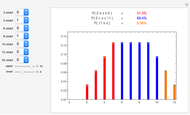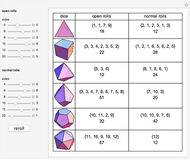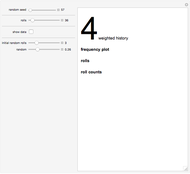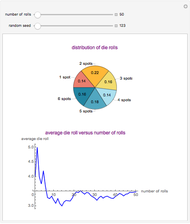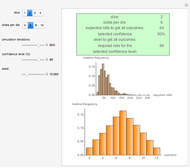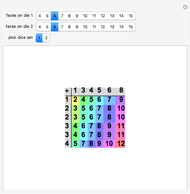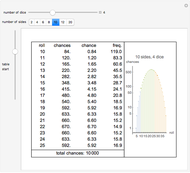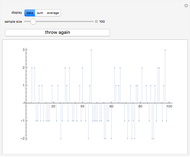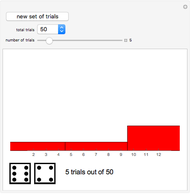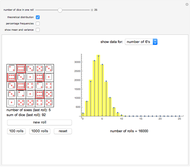Rolling Multiple Dice

Requires a Wolfram Notebook System
Interact on desktop, mobile and cloud with the free Wolfram Player or other Wolfram Language products.
This Demonstration lets you simulate rolling multiple six-sided dice. You can roll up to 50 fair dice at once. The values of two random variables are recorded, the sum of the dice and the number of sixes that appear. You can repeat the experiment 1, 100, or 1000 times with a single mouse click. The number of times each outcome has been observed is displayed in a histogram. Experimental probabilities are compared to the theoretical distribution.
Contributed by: Maciej Pietka (January 2014)
Open content licensed under CC BY-NC-SA
Snapshots
Details
When the number of rolls is increased, the results of a random experiment are seen to approach the theoretical distribution. Theoretical probabilities for obtaining a given number of sixes when multiple dice are rolled are given by a binomial distribution with parameters  and 1/6, where
and 1/6, where  is the number of fair dice. The maximum of this distribution is at
is the number of fair dice. The maximum of this distribution is at  , which is the most likely number of sixes. The probability of a particular sum of
, which is the most likely number of sixes. The probability of a particular sum of  dice is somewhat more cumbersome to compute. According to the central limit theorem, as the number of dice per roll is increased, the theoretical probabilities approach the normal distribution. In this Demonstration, however, instead of using the normal approximation, the theoretical probability of obtaining
dice is somewhat more cumbersome to compute. According to the central limit theorem, as the number of dice per roll is increased, the theoretical probabilities approach the normal distribution. In this Demonstration, however, instead of using the normal approximation, the theoretical probability of obtaining  as the sum of the roll of
as the sum of the roll of  dice is computed exactly as the coefficient of
dice is computed exactly as the coefficient of  in
in  , divided by
, divided by  . The expected value of the total of
. The expected value of the total of  dice is
dice is  and the distribution is symmetric about the expectation.
and the distribution is symmetric about the expectation.
Permanent Citation
"Rolling Multiple Dice"
http://demonstrations.wolfram.com/RollingMultipleDice/
Wolfram Demonstrations Project
Published: January 17 2014






